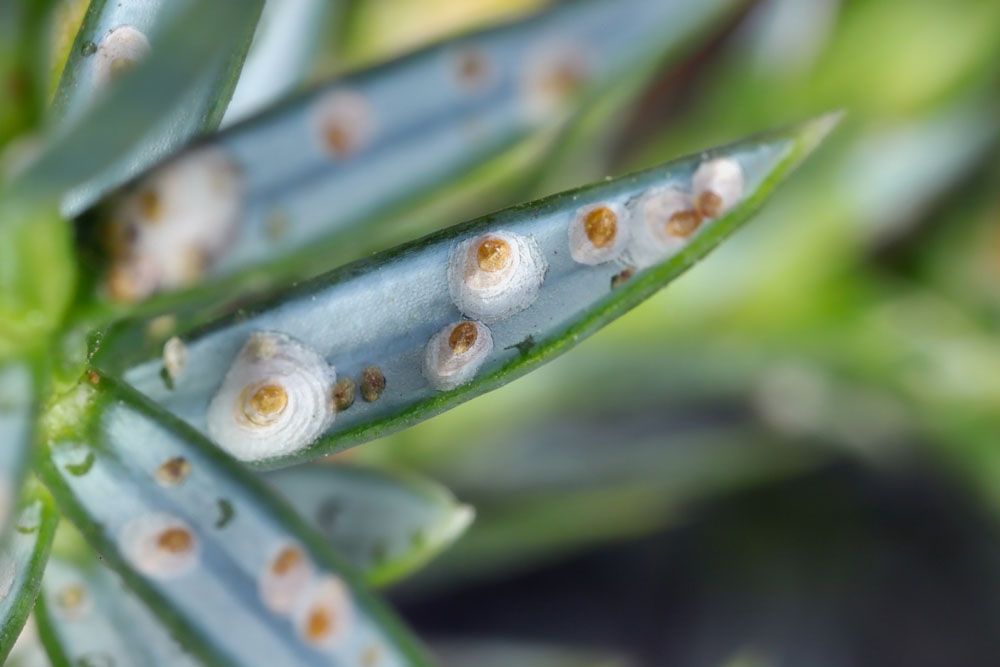
Juniper Scale – Carulaspis juniper
Juniper Scale (Carulaspis juniper)
Common Name: Juniper Scale
Latin Name: Carulaspis juniper
Appearance:
- The juniper scale insect, Carulaspis juniperi, is an extremely small armored scale insect (up to 3/32 inches across).
- Female armour is spherical to oval, white, and parchmentlike. The armor has a light yellow cast skin of the earlier female nymph stages in the middle, so it looks like a small cooked egg.
- Male scale armor is oblong, white, and nearly 1/16 inch long.
- The pale yellow cast skin of the crawler stage is at one end. Adult males are gnat-like insects with four eyes and a waxy tail filament.
- Crawlers look like mobile pollen and have six legs and antennae. Juniper scales are commonly ignored due to their modest size.
Host plant:
Various junipers, particularly pfitzer junipers
Territory:
This European introduction has spread throughout much of North America, including British Columbia.
Damages caused by Juniper Scale:
The loss of the usual glossy colour is the first sign of plant damage caused by this scale insect. As an infestation worsens, the foliage on individual branches will turn chlorotic or yellow and may die. Severe infestations have been known to kill entire plants.
Life history and habits:
The juniper scale’s overwintering stage consists of eggs under the mother’s old covering. Eggs hatch in midspring, most likely in early May. The newly hatched crawlers migrate to feeding areas, settle, and quickly develop a waxy covering. They continue to grow and moult until they reach full maturity in mid-late summer. The winged males emerge at this time and mate, followed by the generation of overwintering eggs. There is one generation obtained per year.
